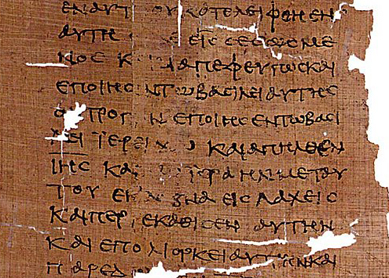Q. How would you explain in a scholarly fashion what is meant when we speak of “the good news”?
A. “The good news” (or “gospel” = “good spiel”) is a literal translation of the Greek word euangelion. New Testament authors use this term to mean the news of salvation, or liberation from sin, brokenness, and estrangement from God. God reveals this good news through Jesus’ ministry, death, and resurrection (
New Testament use of euangelion was likely derived from at least two cultural traditions. The term had acquired religious significance in the Roman Empire, chiefly in the cult of the emperor Augustus, whose appearance, accession to the throne, and decrees were propagandized as “glad tidings” or “gospels”: “[T]hrough his appearance Caesar has exceeded the hopes of all former good messages [euangelia]….for the world the birthday of the god [Caesar] was the beginning of his good messages [euangelion]” (excerpt from an inscription at the ancient Greek city of Priene, 9 B.C.E.).
Although none of the New Testament writers placed Jesus in direct opposition to Caesar, they remembered Jesus as preserving Jewish monotheism by differentiating Caesar from God (see
Also underlying “the good news” in the New Testament is the tradition of the Septuagint, an early translation of the Hebrew Bible into Greek. There the term’s basic meaning is “glad tidings” (
How beautiful upon the mountains
are the feet of the messenger
who announces peace,
who brings good news,
who announces salvation,
who says to Zion, “Your God reigns.”
Luke 4:16-19 quotes an abbreviated version of Isaiah 61:1-2a:
The spirit of the Lord GOD is upon me,
because the Lord has anointed me;
he has sent me to bring good news to the oppressed,
to bind up the brokenhearted,
to proclaim liberty to the captives,
and release to the prisoners;
to proclaim the year of the Lord’s favor.
The text then presents its realization in Jesus: “Then [Jesus] began to say to them, ‘Today this scripture has been fulfilled in your hearing’” (
Paul refers to the “good news” or “gospel” as something orally transmitted, typically “preached” (for example,
The New Testament narratives about Jesus are traditionally called “Gospels.” By the mid-second century C.E., Justin Martyr clearly uses the term euangelion to designate a literary genre: the form in which the good news of Jesus’ life, death, and resurrection is narrated (1 Apology 55).





